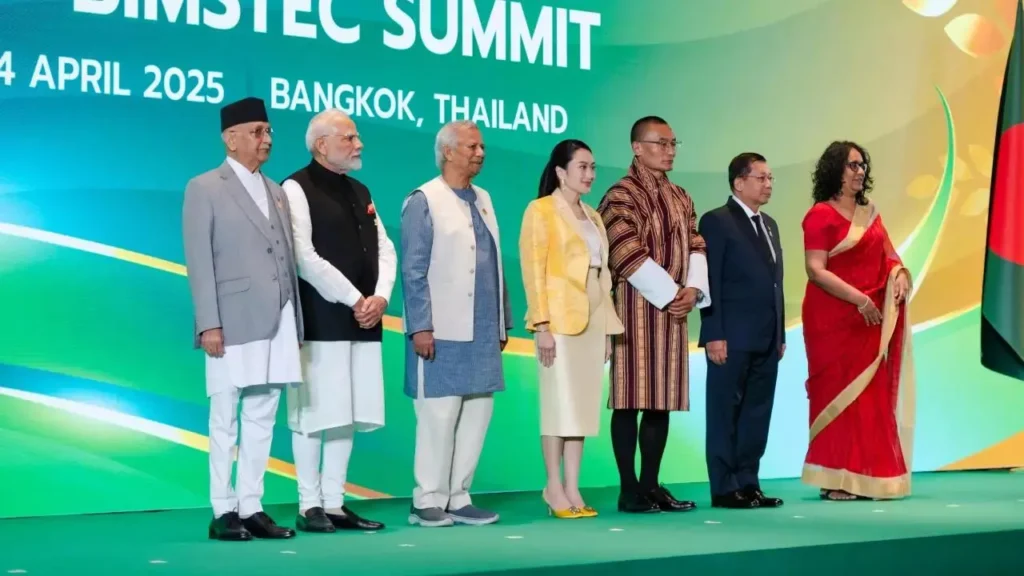BIMSTEC Summit Participation Strengthening Regional Cooperation and Connectivity


The Bay of Bengal Initiative for Multi-Sectoral Technical and Economic Cooperation (BIMSTEC) continues to gain prominence as a regional platform connecting South and Southeast Asia. The recent BIMSTEC Summit, held in Bangkok, Thailand, marked a renewed commitment among member states to deepen collaboration, enhance regional connectivity, and jointly address shared challenges. The participation of top leaders and representatives from the seven member countries—Bangladesh, Bhutan, India, Myanmar, Nepal, Sri Lanka, and Thailand—signaled the growing relevance of BIMSTEC in the evolving geopolitical and economic landscape of the Indo-Pacific.
As the world grapples with challenges such as post-pandemic recovery, supply chain disruptions, climate change, and geopolitical shifts, regional cooperation platforms like BIMSTEC are becoming increasingly crucial. The summit focused on reviving economic ties, boosting trade, and promoting sustainable development, with a shared understanding that regional resilience is key to national progress.
The member nations reaffirmed their dedication to the BIMSTEC Charter, which was signed in 2022 and legally institutionalized the grouping. The Charter outlines the framework for cooperation across 14 priority areas, including trade, investment, energy, transport, environment, public health, agriculture, counterterrorism, and disaster management.
At the heart of the Summit’s agenda was connectivity—not just physical, but also digital and cultural. Leaders discussed the ongoing BIMSTEC Master Plan for Transport Connectivity, a comprehensive blueprint aimed at improving transport infrastructure and facilitating seamless movement of goods and people across the region. Projects under this plan include cross-border highways, railways, ports, and maritime routes, all of which aim to make the Bay of Bengal a vibrant hub of regional integration.
India, which plays a pivotal role in BIMSTEC, reaffirmed its commitment to enhancing connectivity by expanding projects like the Kaladan Multimodal Transit Transport Project and the India-Myanmar-Thailand Trilateral Highway, which are crucial for linking the northeastern region of India with Southeast Asia.
The Summit also emphasized energy cooperation, particularly in the areas of renewable energy, grid interconnection, and energy trade. The region holds untapped potential in hydroelectric and solar power, and joint investments and knowledge-sharing could yield significant benefits.
Economic cooperation was also highlighted, with calls to expedite the BIMSTEC Free Trade Agreement (FTA), which has been in discussion for years. The FTA aims to remove trade barriers, simplify customs procedures, and encourage investments. Participants urged for the finalization of key frameworks such as the BIMSTEC Coastal Shipping Agreement and Motor Vehicles Agreement, which would further enhance trade logistics.
Recognizing rising concerns over terrorism, cyber threats, and transnational crimes, the Summit reiterated the need for greater cooperation in counterterrorism and cybersecurity. Member countries agreed to share intelligence and strengthen mechanisms to combat terrorism financing and extremism.
Additionally, the role of BIMSTEC in ensuring a free, open, and inclusive Indo-Pacific was reinforced. In the face of shifting regional dynamics and global power rivalries, the grouping aims to serve as a bridge between South Asia and ASEAN, promoting peace and stability.
Despite its ambitions, BIMSTEC continues to face challenges such as institutional delays, funding limitations, and political instability in some member states. To overcome these, the Summit stressed the need for regular high-level meetings, stronger secretariat support, and greater engagement from all countries.